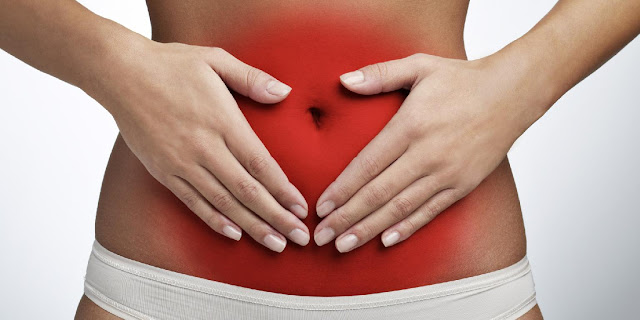Abdominal Pain: Causes, Diagnosis, and Management
Abdominal pain is a common symptom that can range from mild discomfort to severe agony. It is a complex symptom with numerous potential causes, making accurate diagnosis and effective management crucial for providing appropriate medical care. This article aims to explore the various causes of abdominal pain, the diagnostic methods employed to identify its underlying etiology, and the management strategies employed to alleviate discomfort and treat the root cause.
I. Introduction
Abdominal pain refers to pain felt in the area between the chest and the pelvis, commonly referred to as the abdominal cavity. It is a symptom that can arise from a multitude of organs and systems within the body, making the process of pinpointing the exact cause a challenging task for medical professionals. The pain can vary in intensity, duration, and location, ranging from localized discomfort to widespread cramping.
II. Causes of Abdominal Pain
Abdominal pain can originate from various sources, including but not limited to:
- Gastrointestinal Disorders: Disorders of the gastrointestinal tract, such as gastritis, gastroenteritis, peptic ulcers, inflammatory bowel disease (IBD), and irritable bowel syndrome (IBS), can lead to abdominal pain. In IBD, conditions like Crohn's disease and ulcerative colitis cause chronic inflammation of the intestinal lining, resulting in pain.
- Appendicitis: Inflammation of the appendix, known as appendicitis, can lead to severe pain in the lower right abdomen. This condition often requires surgical intervention.
- Gallbladder Issues: Gallstones and inflammation of the gallbladder (cholecystitis) can lead to pain in the upper right abdomen, often accompanied by nausea and vomiting.
- Pancreatitis: Inflammation of the pancreas can cause acute or chronic abdominal pain, often radiating to the back. Alcohol consumption and gallstones are common triggers.
- Renal Conditions: Kidney stones and urinary tract infections can cause sharp, colicky pain in the lower back and lower abdomen.
- Gynecological Problems: Conditions such as ovarian cysts, endometriosis, and pelvic inflammatory disease (PID) can lead to abdominal pain in females.
- Hernias: Hernias, which occur when an organ pushes through a weakened area of muscle or tissue, can result in localized pait dard ka ilaj.
- Abdominal Trauma: Physical injuries to the abdomen, such as blunt or penetrating trauma, can cause intense pain and require immediate medical attention.
- Visceral Pain: This type of pain arises from the internal organs and is often described as dull, vague, and hard to localize. It can be caused by distention, inflammation, or ischemia of the organs.
- Functional Disorders: Conditions like functional dyspepsia and IBS are characterized by chronic or recurrent abdominal pain without clear structural abnormalities.
III. Diagnosing Abdominal Pain
Accurate diagnosis of abdominal pain involves a thorough medical history, physical examination, and often additional tests, such as:
- Imaging Tests: X-rays, ultrasound, computed tomography (CT) scans, and magnetic resonance imaging (MRI) can help visualize the internal structures and identify abnormalities.
- Laboratory Tests: Blood, urine, and stool tests can provide valuable information about possible infections, inflammation, or other systemic issues.
- Endoscopic Procedures: Endoscopy involves using a flexible tube with a camera to visualize the gastrointestinal tract. It can aid in identifying conditions like ulcers, inflammation, and tumors.
- Diagnostic Injections: Sometimes, diagnostic injections of local anesthetics can help determine if a specific organ or structure is the source of pain.
- Diagnostic Criteria: In cases of functional disorders like IBS, specific diagnostic criteria have been established to help differentiate them gas ka ilaj.
IV. Management of Abdominal Pain
The management of abdominal pain depends on its underlying cause:
- Medical Treatment: Treatment may involve antibiotics for infections, medications to reduce inflammation (e.g., in IBD), or proton pump inhibitors for conditions like gastritis and peptic ulcers.
- Surgical Intervention: Conditions like appendicitis, gallstones, and hernias often require surgical removal or repair to alleviate pain.
- Lifestyle Modifications: For functional disorders, dietary changes, stress management, and regular exercise can help alleviate symptoms.
- Pain Management: Over-the-counter pain relievers like acetaminophen or nonsteroidal anti-inflammatory drugs (NSAIDs) can provide temporary relief. However, NSAIDs should be used cautiously due to their potential to cause gastrointestinal irritation.
- Alternative Therapies: Some individuals find relief from techniques such as acupuncture, yoga, and relaxation exercises.
V. When to Seek Medical Attention
While mild abdominal discomfort can often be managed at home, certain symptoms warrant immediate medical attention:
- Severe, persistent pain
- Pain accompanied by high fever
- Inability to pass stool or gas
- Bloody stools or vomiting blood
- Sudden, intense abdominal pain
- Pain after a recent injury
VI. Conclusion
Abdominal pain is a multifaceted symptom that can stem from various underlying causes. Accurate diagnosis and appropriate management are essential to provide relief and prevent complications. If you or someone you know experiences persistent or severe abdominal pain, seeking medical evaluation is crucial for identifying the cause and ensuring proper treatment. By understanding the potential sources of abdominal pain and the diagnostic methods available, individuals can work with healthcare professionals to find effective solutions and improve their pait dard ki desi dawa.




Comments
Post a Comment